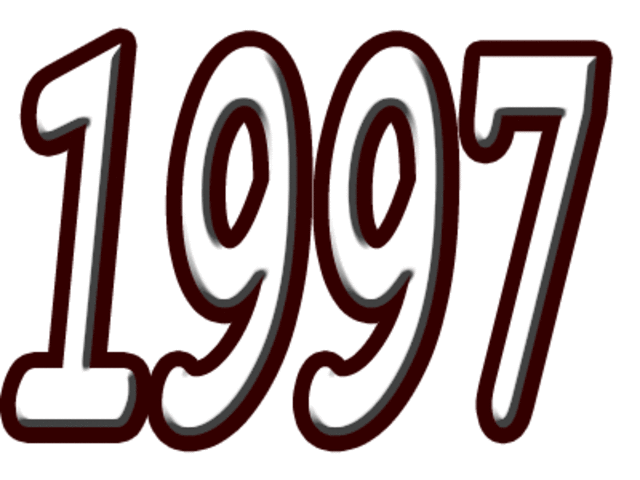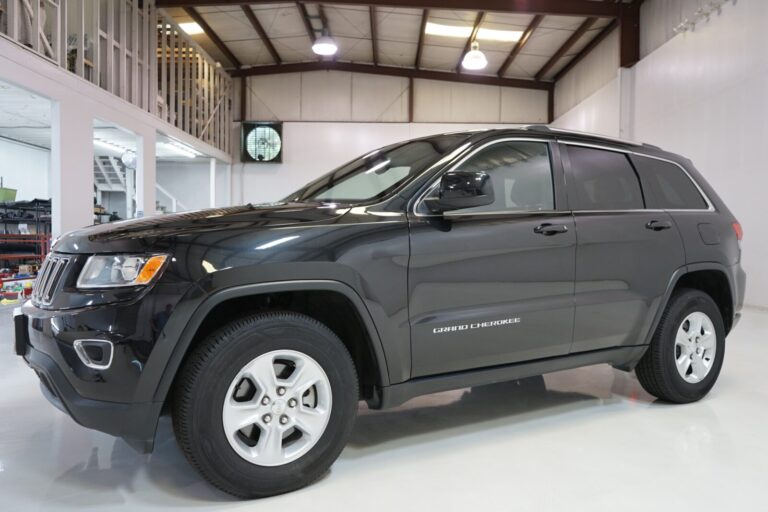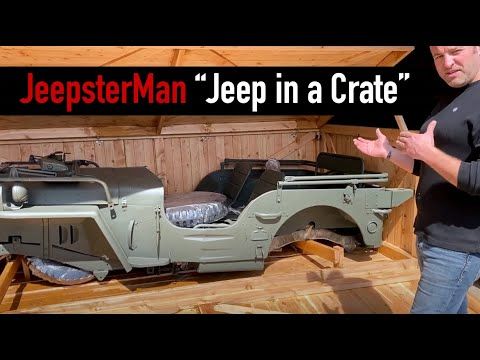1953 Jeep For Sale: Your Guide to Owning an American Icon
1953 Jeep For Sale: Your Guide to Owning an American Icon jeeps.truckstrend.com
The phrase "1953 Jeep For Sale" conjures images of rugged utility, post-war ingenuity, and an enduring symbol of American resilience. More than just a vehicle, a 1953 Jeep represents a tangible piece of history, a no-nonsense machine designed for challenging tasks and adventurous spirits. For enthusiasts, collectors, or anyone seeking a unique blend of heritage and mechanical simplicity, finding a 1953 Jeep for sale can be the beginning of an incredibly rewarding journey. This comprehensive guide will navigate the landscape of acquiring, understanding, and cherishing this iconic vehicle.
The Enduring Legacy of the 1953 Jeep
1953 Jeep For Sale: Your Guide to Owning an American Icon
The 1953 Jeep primarily refers to the Willys CJ-3B, a direct descendant of the legendary WWII MB and Ford GPW military Jeeps, and an evolution of the civilian CJ-2A and CJ-3A models. Introduced in 1953, the CJ-3B distinguished itself with a taller hood, necessary to accommodate the new F-head Hurricane engine. This engine, a significant upgrade from its flathead predecessor, offered more power and efficiency, making the CJ-3B a more capable and versatile workhorse.
The CJ-3B continued the Jeep’s tradition of being an adaptable vehicle, serving countless roles from farm utility and industrial applications to recreational off-roading. Its robust four-wheel-drive system, compact dimensions, and legendary durability cemented its place as an American icon. Today, the appeal of a 1953 Jeep for sale lies not only in its historical significance but also in its timeless design and fundamental mechanical honesty.
Why Buy a 1953 Jeep? The Allure of a Classic
The decision to seek a 1953 Jeep for sale is often driven by a blend of practical and emotional factors:
- Historical Significance: Owning a 1953 Jeep is like owning a piece of living history. It connects you to an era of innovation, post-war growth, and the very roots of the modern SUV.
- Unique Driving Experience: Unlike modern vehicles, a 1953 Jeep offers a raw, unfiltered driving experience. No power steering, no power brakes, minimal insulation – just you, the engine, and the road (or trail). This direct connection to the machinery is incredibly satisfying for many.
- Mechanical Simplicity: The CJ-3B’s design is remarkably straightforward. Its mechanical nature makes it relatively easy for the average enthusiast to understand, troubleshoot, and repair, fostering a rewarding DIY ownership experience.
- Versatility: Whether for light farm work, weekend trail rides, or simply as a nostalgic cruiser, the 1953 Jeep remains surprisingly versatile.
- Community and Support: A vibrant and dedicated community of Willys Jeep owners and enthusiasts exists worldwide, offering a wealth of knowledge, parts sources, and camaraderie.
- Investment Potential: Well-maintained or expertly restored 1953 Jeeps tend to hold or increase in value, making them not just a hobby but potentially a sound investment.

Key Considerations Before Purchasing a 1953 Jeep

Before diving into the market for a 1953 Jeep for sale, it’s crucial to understand what you’re getting into. These are not modern vehicles, and their condition can vary wildly.
- Rust is the Enemy: Like any vehicle of its age, rust is the primary concern. Inspect the frame rails, body tub (especially the floorboards, hat channels, and rear corners), fenders, and firewall thoroughly. Extensive rust can make a "bargain" project far more expensive than anticipated.
- Engine and Drivetrain Health: The F-head Hurricane engine (L-134 or F4-134) is robust but check for unusual noises, smoke from the exhaust, oil leaks, and proper compression. Test the transmission (T-90) for smooth shifting and the transfer case (Dana 18) for proper engagement of 2WD, 4WD High, and 4WD Low.
- Originality vs. Modification: Decide if you want a historically accurate, numbers-matching vehicle or one that has been modified for modern performance (e.g., engine swaps, power steering/brakes, suspension lifts). Originality often commands a higher price, while modifications can impact value positively or negatively depending on their quality and purpose.
- Intended Use: Will it be a show vehicle, a weekend off-roader, or a light-duty farm truck? Your intended use will dictate the level of restoration or repair needed and the budget you should allocate.
- Documentation: Always verify the title and VIN. A clear title is essential for legal ownership and registration. Any history of the vehicle, like old service records or previous ownership details, is a bonus.

Where to Find a 1953 Jeep For Sale
The market for classic vehicles like the 1953 Jeep is diverse. Here are the best places to begin your search:
- Online Marketplaces: Websites like eBay Motors, Hemmings, Bring a Trailer, ClassicCars.com, and specific forums like "The CJ-3B Page" or "Willys Jeeps Forum" often feature listings. Facebook Marketplace and local classifieds can also yield results.
- Classic Car Dealerships: Some specialized dealerships focus on vintage vehicles and might have a 1953 Jeep for sale, often at a premium but potentially in better, inspected condition.
- Auctions: Live and online auctions (e.g., Mecum, Barrett-Jackson for high-end; smaller local auctions for projects) can be a source, but thorough pre-inspection is paramount.
- Willys/Jeep Clubs and Enthusiast Groups: Joining local or national Willys Jeep clubs is an excellent way to network. Members often know of vehicles for sale that aren’t publicly listed.
- Word-of-Mouth: Sometimes, the best finds come from unexpected places – an old barn, a local mechanic, or a chance conversation.
The Buying Process: Tips for a Successful Purchase
Once you’ve found a promising 1953 Jeep for sale, follow these steps to ensure a smooth transaction:
- Thorough Inspection: If possible, inspect the vehicle in person. Bring a magnet to check for bondo over rust. Look underneath for frame damage, leaks, and signs of poor repairs.
- Professional Pre-Purchase Inspection (PPI): For significant investments, hire a mechanic experienced with vintage vehicles to perform a PPI. They can identify issues you might miss.
- Test Drive: Drive the Jeep on various surfaces if possible. Check for:
- Engine: Easy starting, smooth idle, acceleration, unusual noises.
- Transmission: Smooth shifting, no grinding, proper clutch engagement.
- Brakes: Firm pedal, straight stopping, no pulling.
- Steering: Excessive play, wandering.
- 4WD System: Engage 4WD High and Low to ensure they work correctly.
- Negotiation: Be prepared to negotiate based on the vehicle’s condition, market value, and any issues identified during inspection. Knowledge is power here.
- Paperwork: Ensure the seller has a clear, transferable title. Get a bill of sale detailing the vehicle, price, and seller/buyer information.
- Transportation: Plan how you’ll get the Jeep home. Unless it’s in excellent, roadworthy condition, trailering is often the safest option.
Restoration or Drive as Is? Understanding the Commitment
Finding a 1953 Jeep for sale often presents a choice: buy a fully restored model, a driver-quality vehicle, or a project. Each comes with its own commitment:
- Full Frame-Off Restoration: This involves disassembling the entire vehicle, repairing or replacing every component, and repainting. It’s incredibly rewarding but highly time-consuming and expensive, easily costing tens of thousands of dollars.
- Partial/Mechanical Restoration: Focusing on getting the engine, drivetrain, brakes, and steering in top shape while leaving the body largely original. This is a common approach for those who want a reliable driver without the show-car price tag.
- Drive as Is (Preservation): If you find a well-preserved original, the goal might be to maintain its current condition, focusing on preventative maintenance and minimal repairs to keep it roadworthy.
Owning a 1953 Jeep: Life with a Legend
Owning a 1953 Jeep is a unique experience. Be prepared for:
- Maintenance: While simple, these vehicles require regular attention. Fluid checks, greasing, and addressing small issues before they become big ones are key.
- Driving Characteristics: Expect a slower pace, unassisted steering and brakes, and a generally louder, more visceral ride than modern vehicles. It’s part of the charm!
- Parts Availability: Mechanical parts for the F-head engine, T-90 transmission, and Dana axles are generally good due to their widespread use. Body panels and specific trim pieces might be harder to find but are available through specialty suppliers.
- Community: Embrace the community! Online forums, local clubs, and vintage Jeep events are invaluable resources for advice, parts, and shared passion.
- Insurance: Look for classic car insurance providers who understand the unique value and usage patterns of vintage vehicles.
1953 Jeep For Sale: Estimated Price Guide
The price of a 1953 Jeep for sale can vary significantly based on its condition, originality, and location. This table provides a general estimate:
| Condition Category | Description | Estimated Price Range (USD) | Key Factors Influencing Value |
|---|---|---|---|
| Project | Non-running, significant rust, major mechanical issues, incomplete. Requires full restoration. | $2,000 – $7,000 | Extent of rust, completeness of parts, presence of title, overall structural integrity. May be parts vehicles. |
| Fair | Running but needs significant mechanical work, body repair, or full repaint. Driveable but not reliable or presentable. | $7,000 – $15,000 | Engine/drivetrain condition, extent of body rust, completeness, ability to drive short distances. |
| Good Driver | Roadworthy, running well, minimal rust (surface only), older repaint, functional 4×4. Can be driven regularly with minor fixes. | $15,000 – $25,000 | Reliability of mechanicals, presentable paint/interior, functional lights/brakes, minor cosmetic flaws. |
| Excellent | Well-maintained, recent mechanical refresh or older quality restoration. Minimal flaws, clean paint, solid frame/body, all systems functioning correctly. Show-quality potential. | $25,000 – $40,000 | Quality of restoration/maintenance, originality of components, overall aesthetic appeal, lack of major issues. |
| Concours/Show | Meticulously restored to original factory specifications or better. Flawless paint, perfect mechanics, highly accurate details. Ready for high-level shows. | $40,000 – $60,000+ | Authenticity, quality of restoration (often professional), matching numbers, historical documentation, awards/provenance. Very rare to find in this condition without professional intervention. |
Note: These are estimates and actual prices can fluctuate based on market demand, location, and specific vehicle history.
Frequently Asked Questions (FAQ) about the 1953 Jeep
Q1: What engine does a 1953 Jeep (CJ-3B) typically have?
A1: The 1953 Willys CJ-3B is known for its "Hurricane" F4-134 engine, an F-head inline four-cylinder engine that produced more horsepower and torque than its flathead predecessors, requiring the CJ-3B’s distinctive taller hood.
Q2: Are parts readily available for a 1953 Jeep?
A2: Yes, generally. Mechanical components for the engine, transmission (T-90), and axles (Dana 25/44) are quite common due to their widespread use in many Willys vehicles. Body panels and specific trim pieces can be sourced from specialty reproduction manufacturers and vintage Jeep parts suppliers.
Q3: Can a 1953 Jeep be a reliable daily driver?
A3: While mechanically robust, a 1953 Jeep lacks modern safety features, comfort, and speed. It’s generally not recommended as a daily driver, especially in modern traffic. It shines as a weekend cruiser, off-road vehicle, or show vehicle.
Q4: What’s the main difference between a CJ-3A and a CJ-3B?
A4: The primary difference is the engine and hood. The CJ-3A used the flathead L-134 engine with a lower hood. The 1953 CJ-3B was designed to accommodate the taller F-head Hurricane F4-134 engine, necessitating its distinctive "high-hood" design.
Q5: What should I look for to determine if a 1953 Jeep is original?
A5: Look for matching numbers on the engine, frame, and body tag if possible. Check for original components like gauges, steering wheel, seats, and specific body details unique to the CJ-3B. Uncut fenders, original dash layout, and correct drivetrain components are good indicators.
Q6: Is it difficult to work on a 1953 Jeep myself?
A6: For those with basic mechanical aptitude, 1953 Jeeps are relatively simple to work on. Their straightforward design and lack of complex electronics make them ideal for DIY enthusiasts. A good service manual is an invaluable tool.
Conclusion
The quest for a "1953 Jeep For Sale" is more than just a search for a vehicle; it’s an embrace of history, a commitment to a unique driving experience, and an entry into a passionate community. Whether you’re seeking a project to restore, a reliable driver, or a concours-level showpiece, the 1953 Willys CJ-3B offers an unparalleled blend of rugged charm and American heritage. With careful consideration, thorough inspection, and a clear understanding of the commitment involved, finding and owning one of these iconic machines can be a deeply rewarding adventure, allowing you to drive a piece of history and keep its enduring legacy alive for generations to come.




